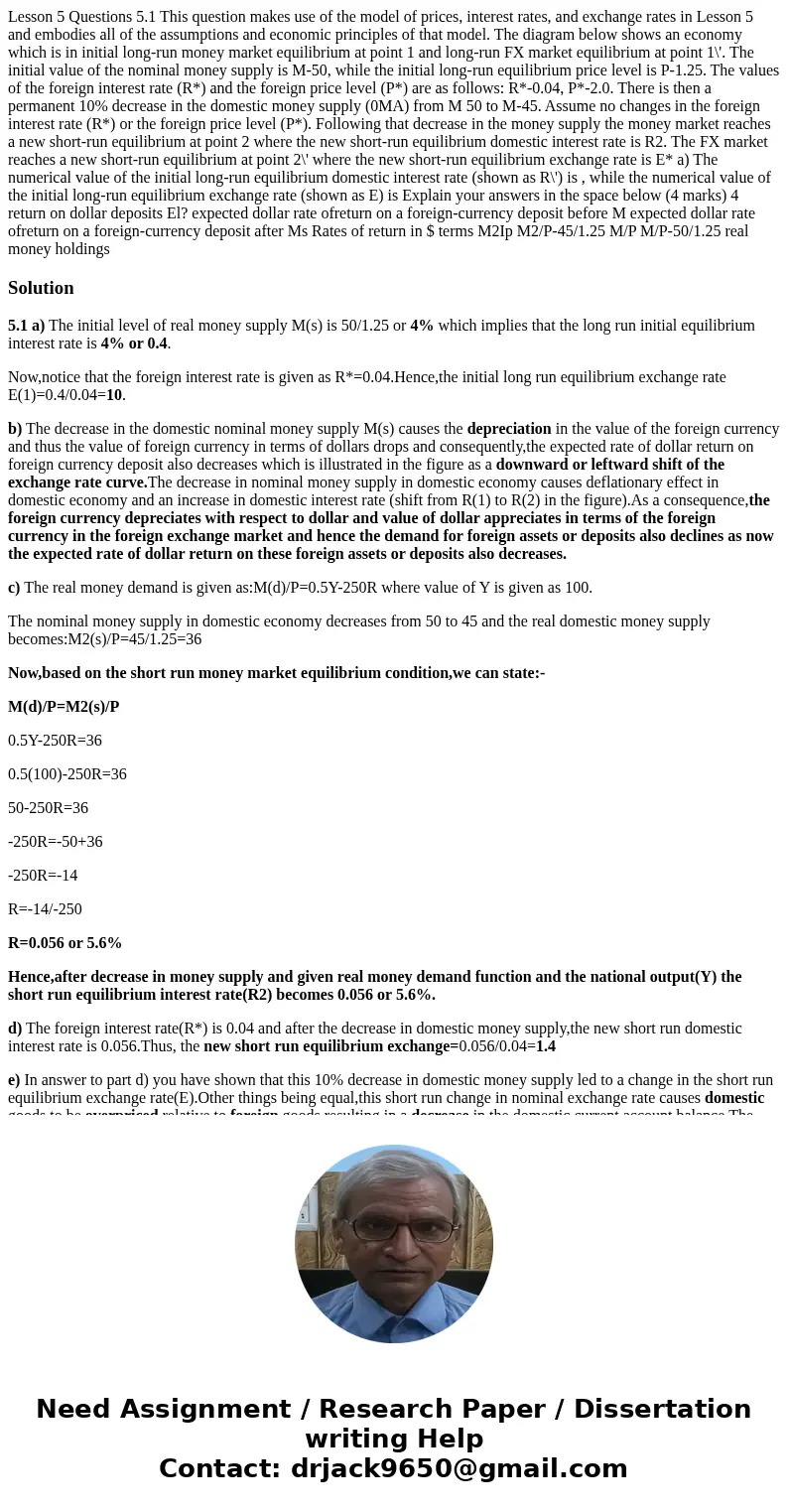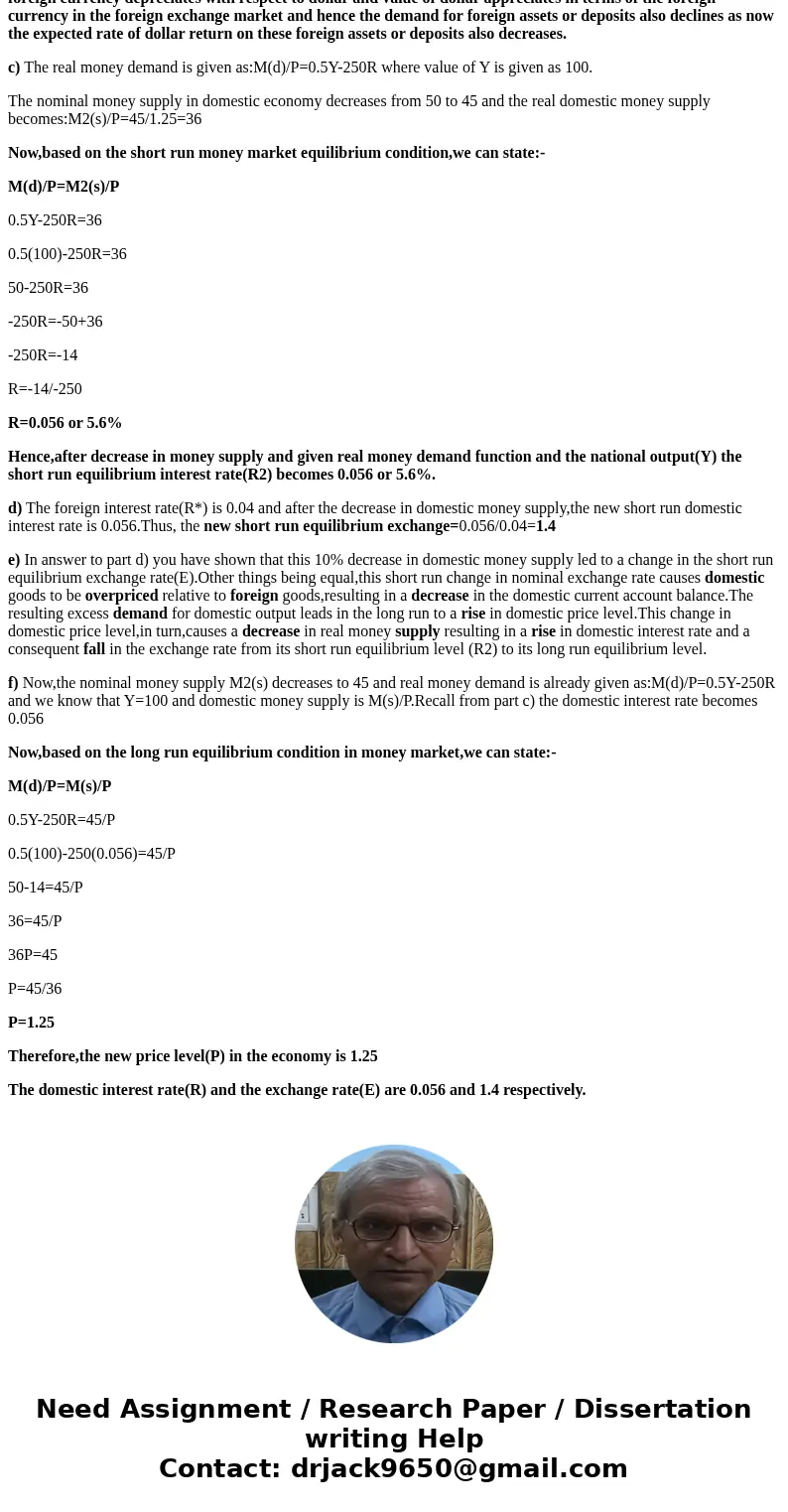Lesson 5 Questions 51 This question makes use of the model o
Solution
5.1 a) The initial level of real money supply M(s) is 50/1.25 or 4% which implies that the long run initial equilibrium interest rate is 4% or 0.4.
Now,notice that the foreign interest rate is given as R*=0.04.Hence,the initial long run equilibrium exchange rate E(1)=0.4/0.04=10.
b) The decrease in the domestic nominal money supply M(s) causes the depreciation in the value of the foreign currency and thus the value of foreign currency in terms of dollars drops and consequently,the expected rate of dollar return on foreign currency deposit also decreases which is illustrated in the figure as a downward or leftward shift of the exchange rate curve.The decrease in nominal money supply in domestic economy causes deflationary effect in domestic economy and an increase in domestic interest rate (shift from R(1) to R(2) in the figure).As a consequence,the foreign currency depreciates with respect to dollar and value of dollar appreciates in terms of the foreign currency in the foreign exchange market and hence the demand for foreign assets or deposits also declines as now the expected rate of dollar return on these foreign assets or deposits also decreases.
c) The real money demand is given as:M(d)/P=0.5Y-250R where value of Y is given as 100.
The nominal money supply in domestic economy decreases from 50 to 45 and the real domestic money supply becomes:M2(s)/P=45/1.25=36
Now,based on the short run money market equilibrium condition,we can state:-
M(d)/P=M2(s)/P
0.5Y-250R=36
0.5(100)-250R=36
50-250R=36
-250R=-50+36
-250R=-14
R=-14/-250
R=0.056 or 5.6%
Hence,after decrease in money supply and given real money demand function and the national output(Y) the short run equilibrium interest rate(R2) becomes 0.056 or 5.6%.
d) The foreign interest rate(R*) is 0.04 and after the decrease in domestic money supply,the new short run domestic interest rate is 0.056.Thus, the new short run equilibrium exchange=0.056/0.04=1.4
e) In answer to part d) you have shown that this 10% decrease in domestic money supply led to a change in the short run equilibrium exchange rate(E).Other things being equal,this short run change in nominal exchange rate causes domestic goods to be overpriced relative to foreign goods,resulting in a decrease in the domestic current account balance.The resulting excess demand for domestic output leads in the long run to a rise in domestic price level.This change in domestic price level,in turn,causes a decrease in real money supply resulting in a rise in domestic interest rate and a consequent fall in the exchange rate from its short run equilibrium level (R2) to its long run equilibrium level.
f) Now,the nominal money supply M2(s) decreases to 45 and real money demand is already given as:M(d)/P=0.5Y-250R and we know that Y=100 and domestic money supply is M(s)/P.Recall from part c) the domestic interest rate becomes 0.056
Now,based on the long run equilibrium condition in money market,we can state:-
M(d)/P=M(s)/P
0.5Y-250R=45/P
0.5(100)-250(0.056)=45/P
50-14=45/P
36=45/P
36P=45
P=45/36
P=1.25
Therefore,the new price level(P) in the economy is 1.25
The domestic interest rate(R) and the exchange rate(E) are 0.056 and 1.4 respectively.


 Homework Sourse
Homework Sourse